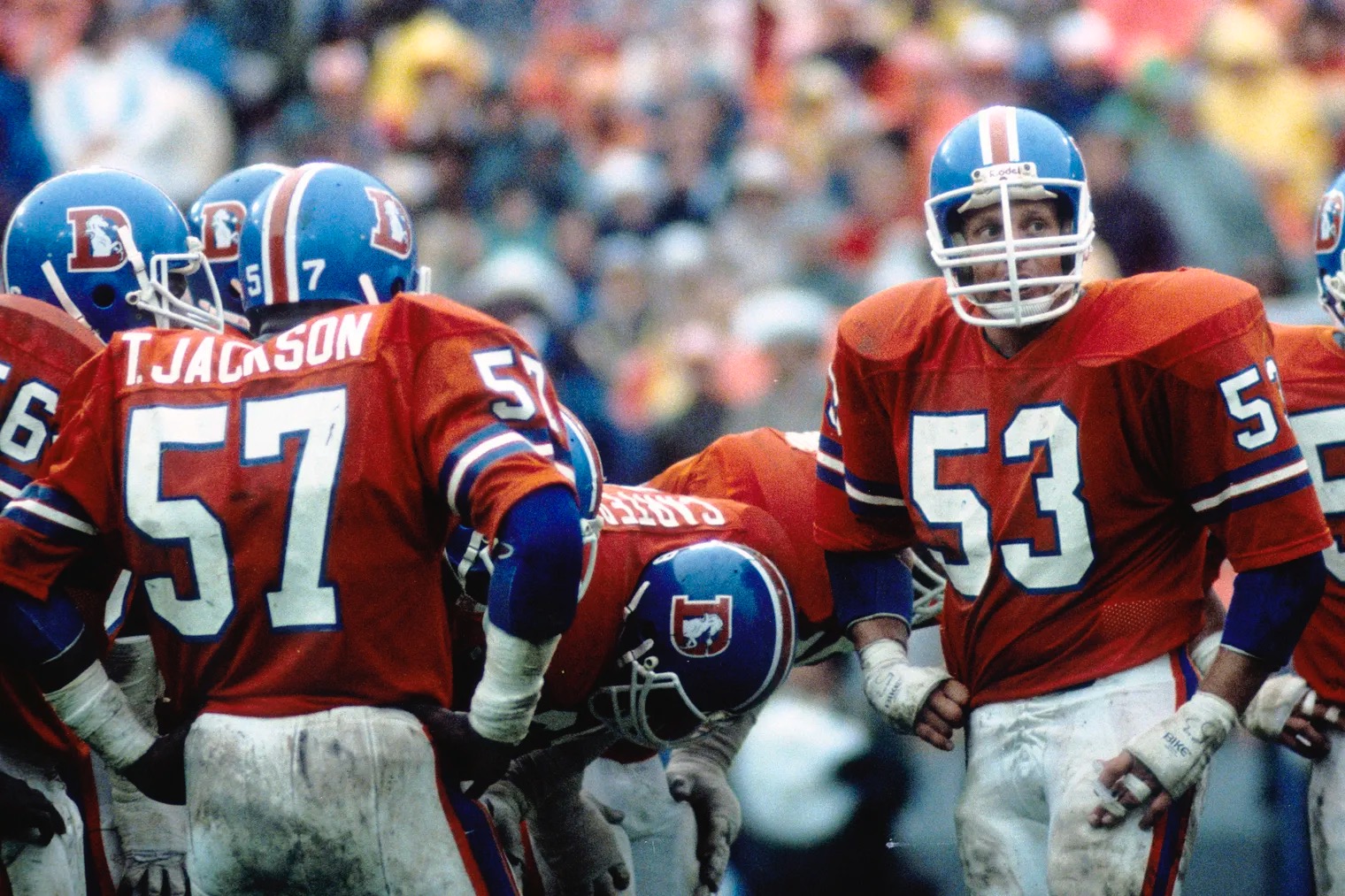
It Was My Fate to Be a Denver Broncos Fan
Last month, I launched this blog as a tribute to one of my favorite books, “A Fan’s Notes,” by Frederick Exley. My posts follow a simple theme that mirrors the book’s title: Notes on the many things I’m passionate about and why they mean so much.
After writing about that book and then a band and poem, I figured it was time to dedicate this space to sports. It’s the proper way to honor Exley, whose football fanaticism is central to “A Fan’s Notes.”
In the book’s opening scene, Exley explains how his undying devotion to the New York Giants nearly killed him. He suffered what he thought was a heart attack caused by pregame jitters, which Exley called the “high and delicious anxiety” he always experienced before watching New York play.
That’s true fandom. And while I’ll never root for any team as intensely as Ex rooted for the Giants, I do have longevity when it comes to my favorite football team, the Denver Broncos.
I’ve been a Broncos fan almost my entire life—long before I ever stepped foot in Colorado, let alone lived here. For this latest blog, I detail my unusual path to becoming a Denver diehard, a story that begins nearly five decades ago, far from the Mile High City and in the unlikeliest of ways.
Destined to root for Denver
My family moved to Memphis from Racine, Wisconsin, when I was 6. That was around the time my Dad and I began bonding over sports. He and I would sit on the Davenport each weekend and tune in to whatever was on and whoever was playing. On Sunday afternoons that autumn and many autumns after, we’d watch football.
Without a hometown franchise to support and because my Dad’s favorite team was the lowly Detroit Lions, I needed someone to root for. Thankfully, the Sears catalog had an extensive NFL product section, so when the Christmas season rolled around, that’s where I turned.
The Sears catalog, or “Wish Book” as it was called, always seemed to feature the Dallas Cowboys or Pittsburgh Steelers, which was understandable based on their dominance in the 1970s, but I had no interest in either team.
As I perused the catalog’s NFL products, something steered me toward the Denver Broncos. All these years later, I like to think it was destiny. I only know I was drawn to their orange and blue color scheme, their “D” logo with a snorting white bronco in the middle, even their relative obscurity compared to the league’s more popular, successful franchises.
In a moment, I decided Denver would be my team, so I asked Santa Claus for Broncos gear—and he delivered.
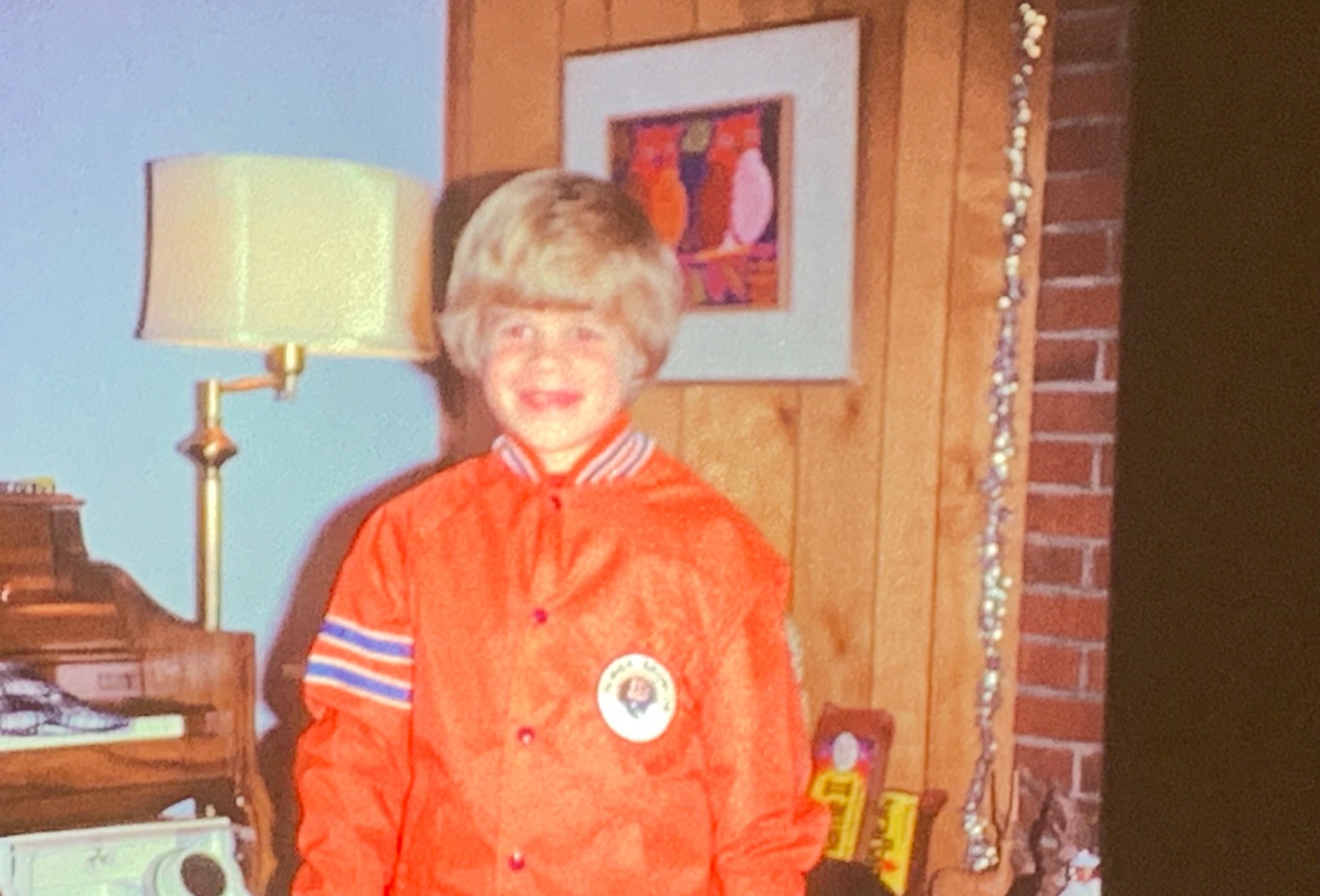
I chose Denver for nothing more than the reasons stated above, and I didn’t have any ties to Colorado except my Aunt Holly, who lived in the small mountain town of Evergreen near Denver. None of that mattered. I now had a team to cheer on Sundays, and I soon began asking for and collecting other team memorabilia.
Eventually, I would own all manner of Broncos-themed items—pajamas, bed sheets, posters, hats, mittens, T-shirts, pennants, a bedside lamp, a Pizza Hut placemat. The list goes on and on. My passion grew with each addition, and each piece told a story—even the cheap plastic mini Broncos helmet in the upper-left corner of the below montage.
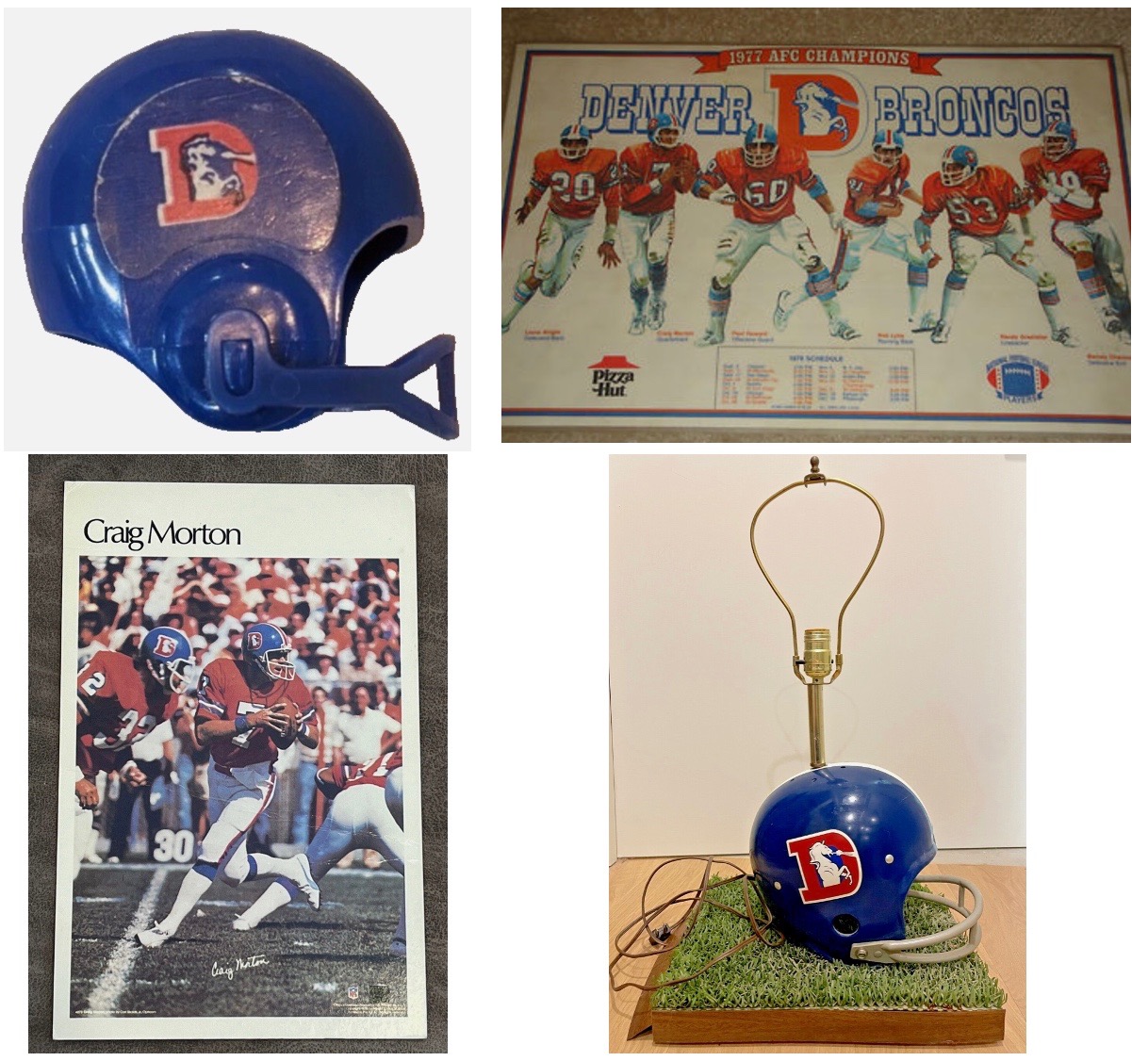
When I was 7 and in the Cub Scouts, I painted my Pinewood Derby race car with Denver’s colors and adorned it with that mini helmet on top. The Pinewood Derby is an event where Scouts build a car using a small block of wood, plastic wheels and metal axles and race them in an elimination-style tournament. The sleeker the car, the faster it goes.
My bright idea of adding a hollowed-out football helmet—which acted like a parachute and provided resistance down the track—proved I didn’t understand aerodynamics. Or perhaps I didn’t care. I was eliminated quickly, but it was worth it to represent my team.
I remember my Dad, who by then had adopted the Broncos based on my allegiance (and because the Lions were still terrible), never said a word, never warned me that my design was flawed. Loyalty to our team was more important.
Broncos on the big stage
Our loyalty was rewarded during the 1977-78 season, my second year of Broncos fandom. Denver made the playoffs and handily beat two hated rivals—the Steelers and Raiders—to earn a spot in Super Bowl XII against the Cowboys.
The big game was on Jan. 15, 1978, at the Superdome in New Orleans, and I remember going to a watch party at the home of one of my Dad’s YMCA coworkers. My parents brought Orange Crush soda, a nod to the Broncos’ vaunted defense, which I was sure would crush the Cowboys behind stars like Tom Jackson, Randy Gradishar, Billy Thompson, Lyle Alzado and others.
Unfortunately, Denver ran into an even more vaunted quarterback named Roger Staubach, and the Cowboys cruised to a 27-10 win. I was heartbroken but not deterred. I’m sure I didn’t have the maturity at age 7 to express such a rational thought, but I like to think that was the first time I uttered, “There’s always next year.”
It’s a common refrain for all sports fans and one I would say often as a Broncos fan. My team lost the 1987, 1988 and 1990 Super Bowls—all blowouts—and quickly became an NFL punchline. But they had one of the league’s best quarterbacks, John Elway, and at least they were increasingly relevant and popular.
An early, pre-Elway example of their newfound franchise fame occurred in 1979 when the Broncos appeared on the hit TV show “Mork and Mindy.”
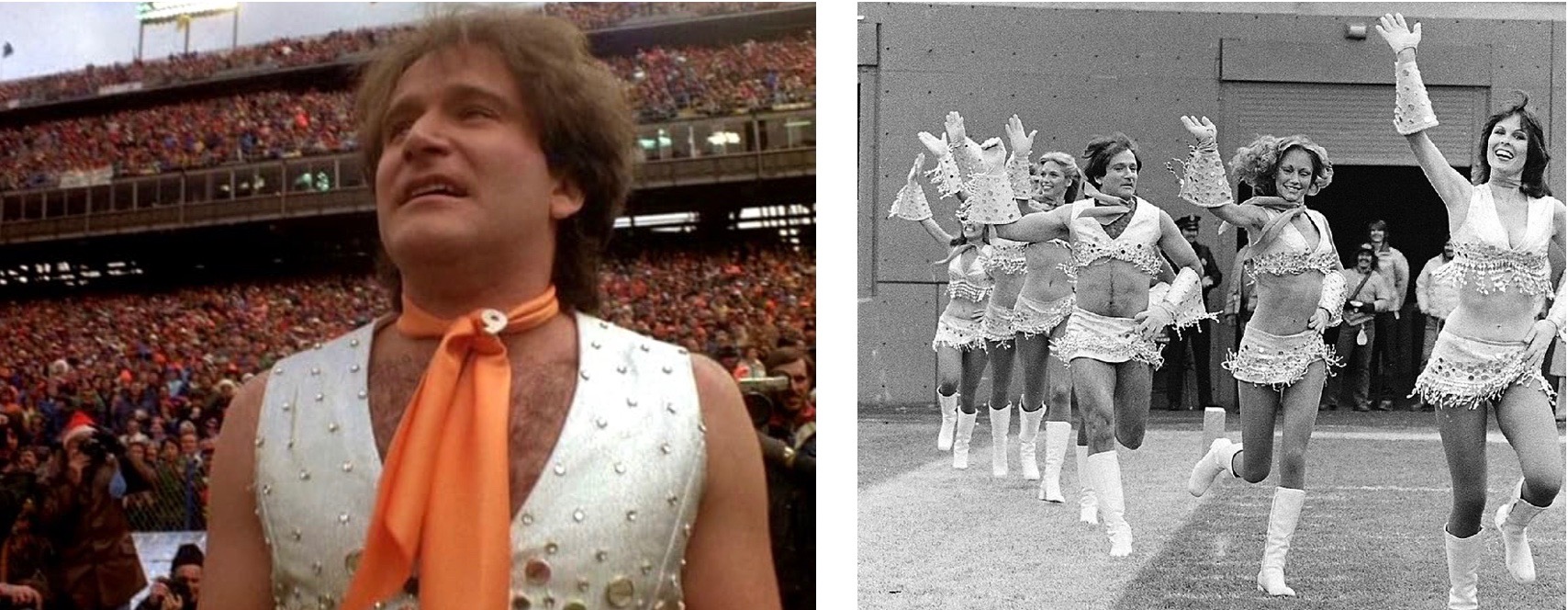
In the episode, Mork from Ork, played by the late, great Robin Williams—incidentally, this is my second straight blog to mention him—performed with the Denver Broncos cheerleaders, and the footage was used in the show. To me, it meant the Broncos were big-time.
Rocky Mountain high
When I became a Broncos fan as a young boy, I had never traveled farther west than St. Louis, but I quickly became obsessed with Denver and Colorado for several reasons.
Nationally televised Broncos home games featured stunning B roll shots of nearby mountains and ski slopes. “Mork and Mindy” was set in Boulder and included views of the town and Front Range peaks. During visits from my Aunt Holly, she routinely made life in the Rockies sound idyllic.
I was hooked. And with such an attachment to a place based solely on what I saw on TV and heard from my aunt, I knew I would someday make a home there. I did visit several times during college, and a few years later, in my mid-20s, I finally moved to Colorado to live with my three cousins, Jeff, Brad and Jon, near Boulder.
These were my drifter days when I worked temp and seasonal jobs and cared more about adventure than my career, so I didn’t put down roots in Colorado, at least not then. Instead, I split my time between Alaska (summers) and Colorado (winters), and in 1997, when I was 26, I moved to Breckenridge to be a ski bum with my then-girlfriend and now-wife, Sandy.
Our ski season in Breck coincided with the 1997-98 football season—when the Broncos finally broke their Super Bowl curse. On Jan. 25, 1998, behind legendary performances from Elway and Terrell Davis, the Denver Broncos beat the Green Bay Packers in a 31-24 thriller to claim their first championship.
The game was almost two decades to the day since they lost in their inaugural Super Bowl appearance, and it seemed fitting that I was only a couple hours from Denver when it happened.
Later that spring, Sandy and I moved away from Colorado and back to her home state of Alaska, where we stayed for seven years, but we vowed to return someday and make it our permanent home. Destiny wasn’t done with me yet.
A new phase of Broncos fandom
Our first year in Alaska, Denver defended its title with a Super Bowl XXXIII win over the Atlanta Falcons. Back-to-back championships marked an embarrassment of riches for Broncos Country after years of Super Bowl misery.
Though Sandy and I spent the next 16 years in Alaska and Memphis, we thankfully found our way back to Colorado in 2014 when we relocated to Louisville, about 20 miles northwest of Denver.
After all those years of being a fan from afar, I finally got to see some games in person, though probably not as many as I imagined when I was a kid who dreamt of moving here. These days, we opt for ski passes over season tickets.
However, one of the most memorable games we saw live was the final home game of the 2015-16 season when Peyton Manning came off the bench in the second half and rallied the Broncos to victory. We were in the nosebleeds, but just being in the building was enough for this lifelong fan.
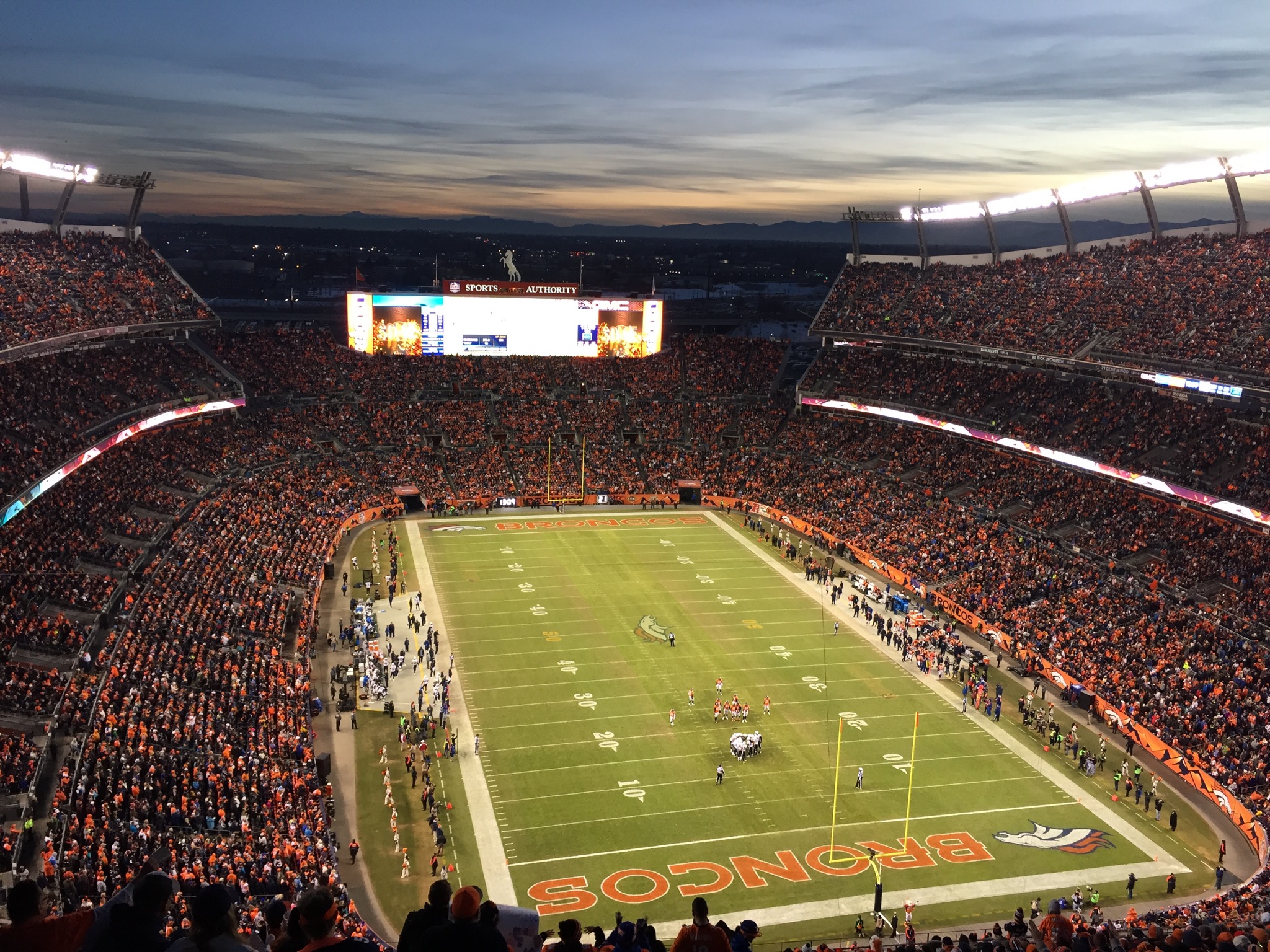
A few weeks later, Manning led the Broncos to a 24-10 Super Bowl 50 win over the Panthers, and Denver improved to 3-5 all-time in Super Bowls. There was much celebration across Broncos Country—and certainly in the Smith household.
I’d like to say that joy has continued. But ever since that moment, things have been rough for Broncos fans. Not only has the team not had a winning season or made the playoffs since 2016, but archrival Kansas City has won three rings.
We’ve gone through more coaches and quarterbacks than most teams, yet fans here continue to support the team and say, “There’s always next year.” I know I still do and always will.
Revisiting the origin story of my longest-running fandom—which is nearing the half-century mark—has reminded me of the line from “A Fan’s Notes” that launched this blog: “It was my fate, my destiny, my end, to be a fan.”
When I think about how I randomly chose Denver as my team at age 6, how I rooted for them over many years and through ups and downs, and how I finally made Colorado my home, I can’t help but feel the same. Being a Broncos fan was indeed my fate.

0 Comments Add a Comment?